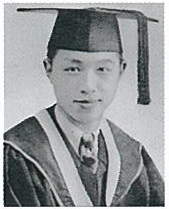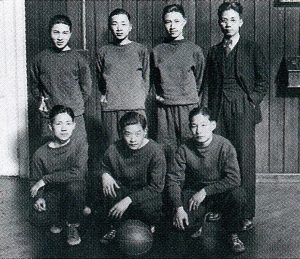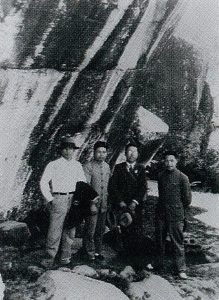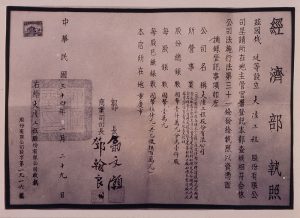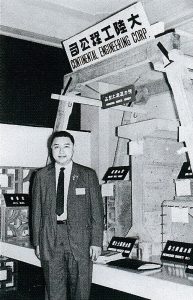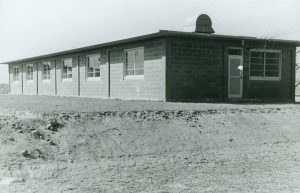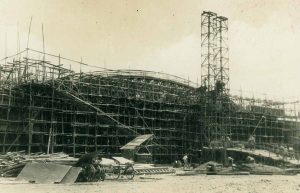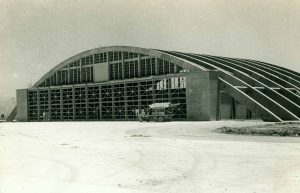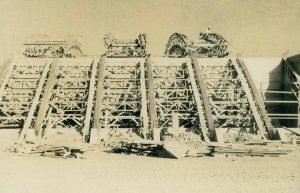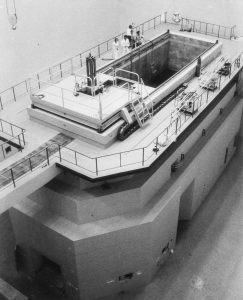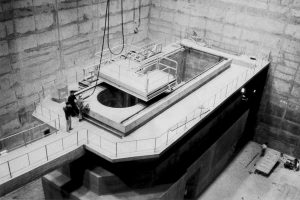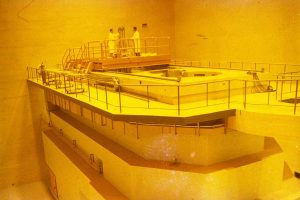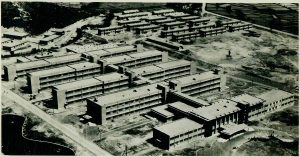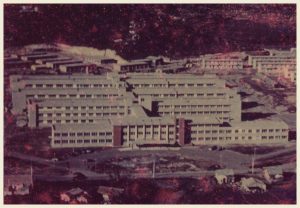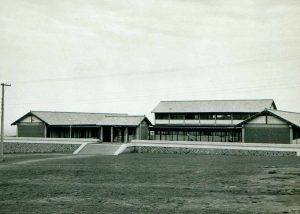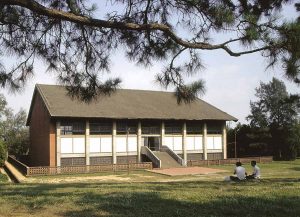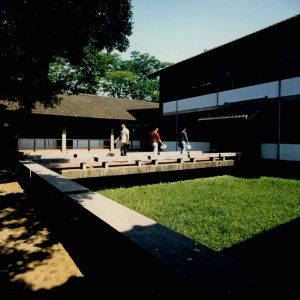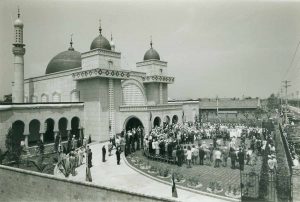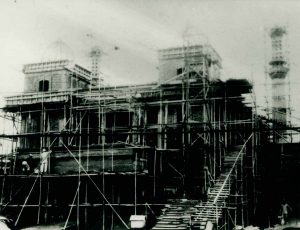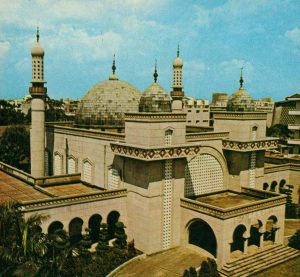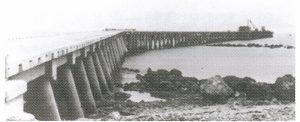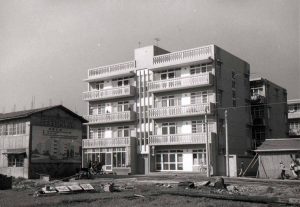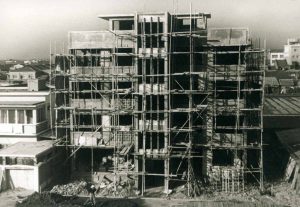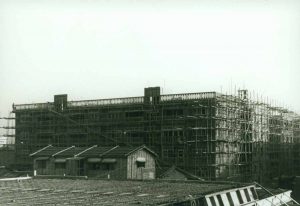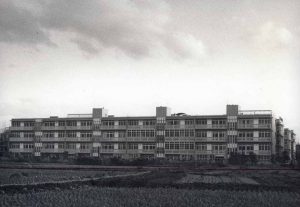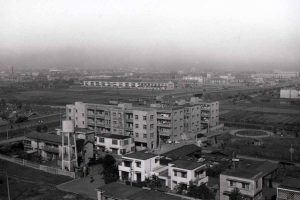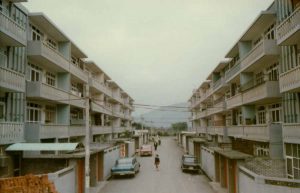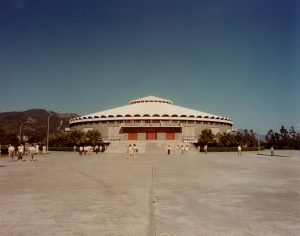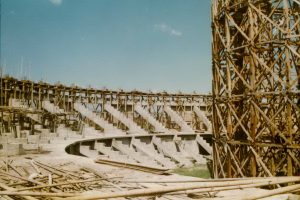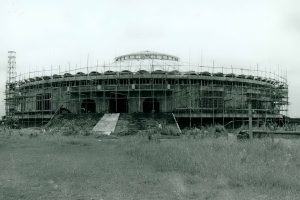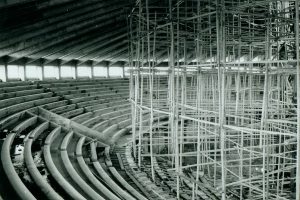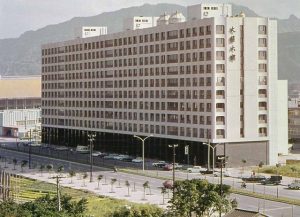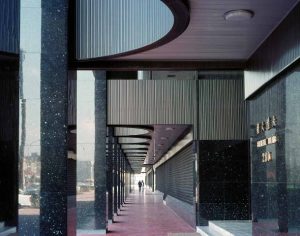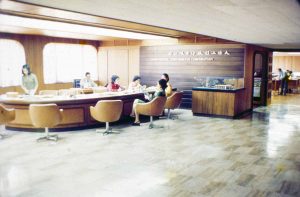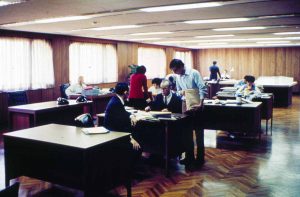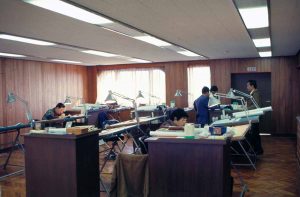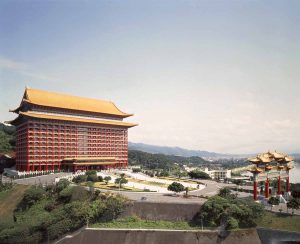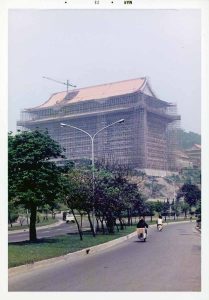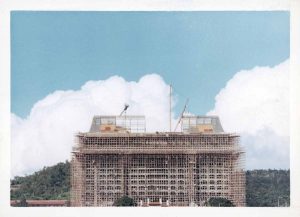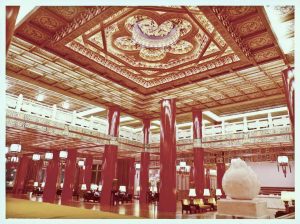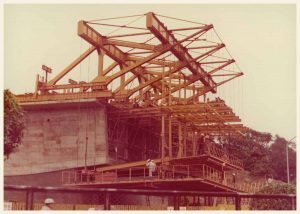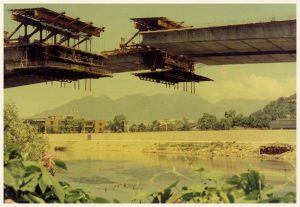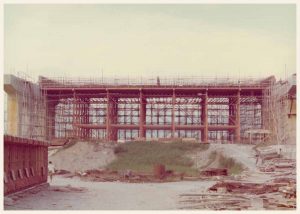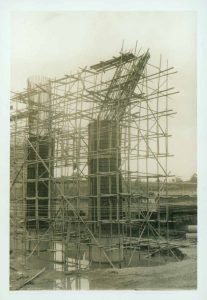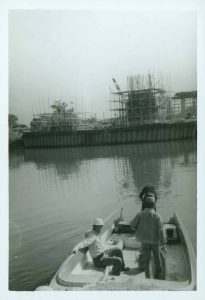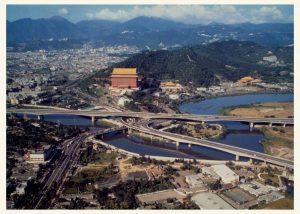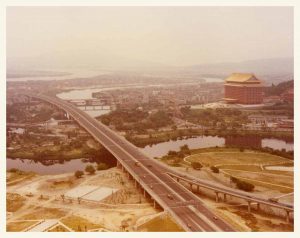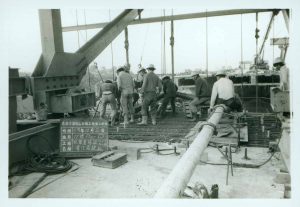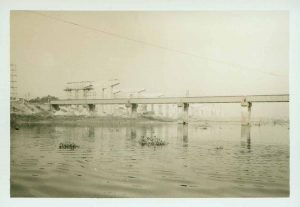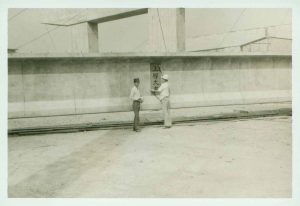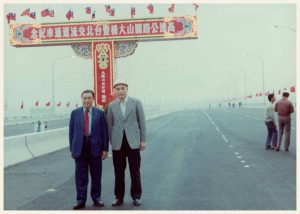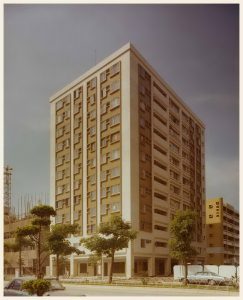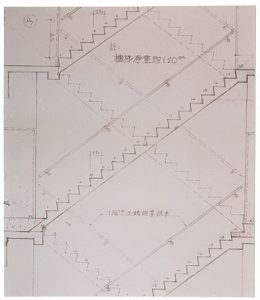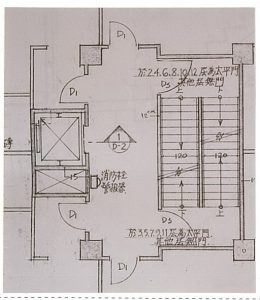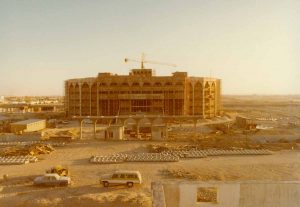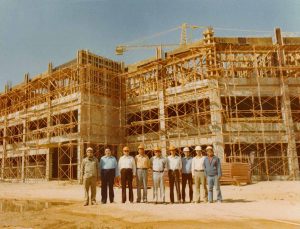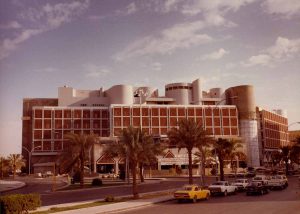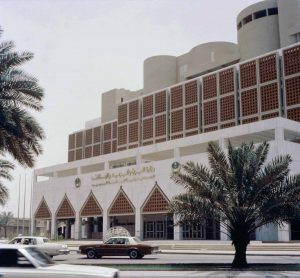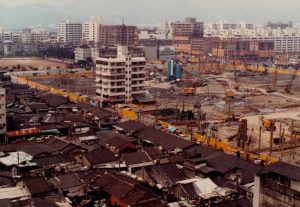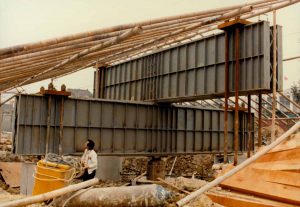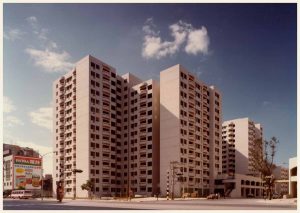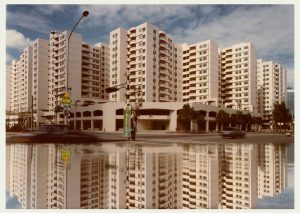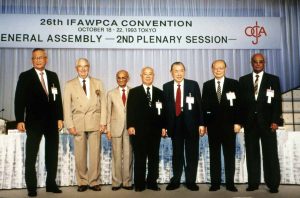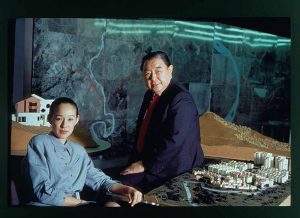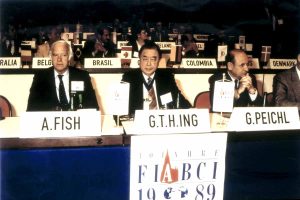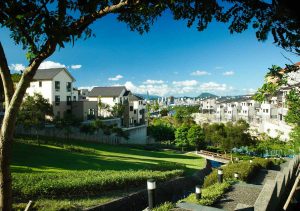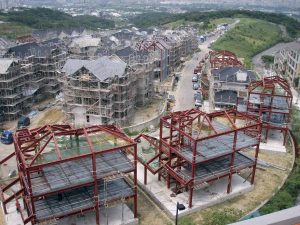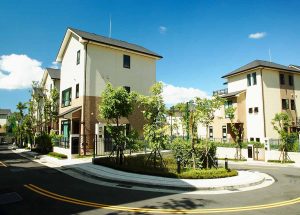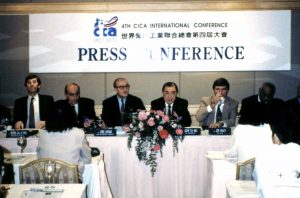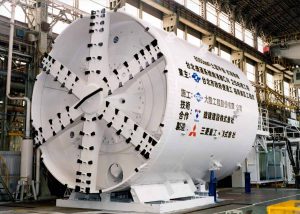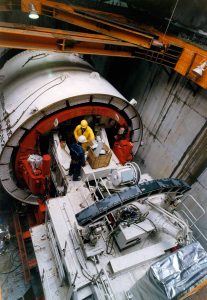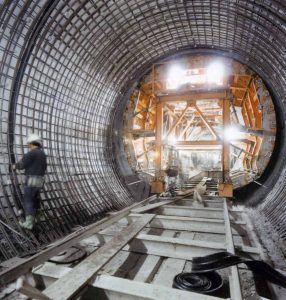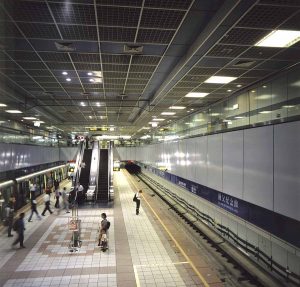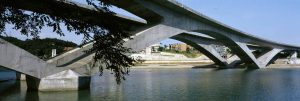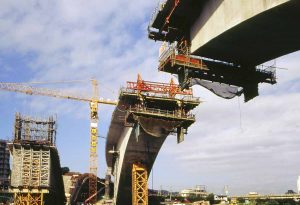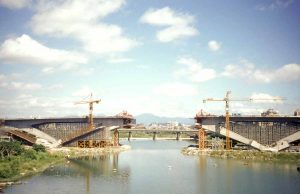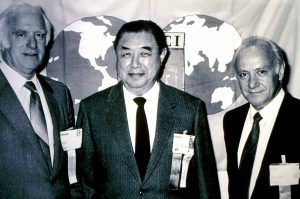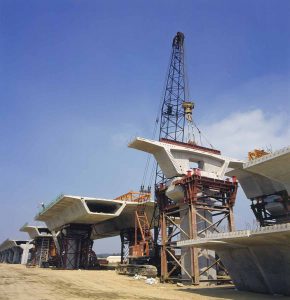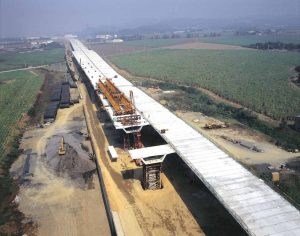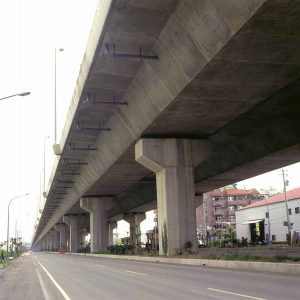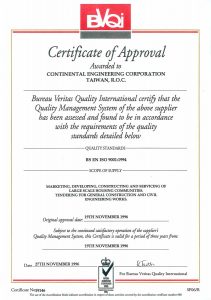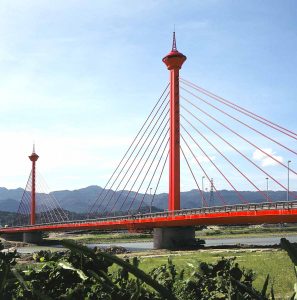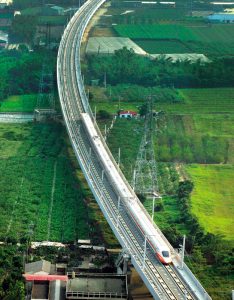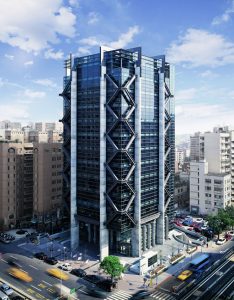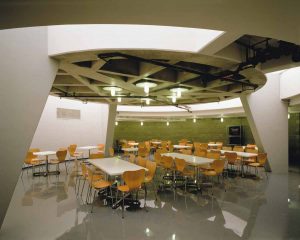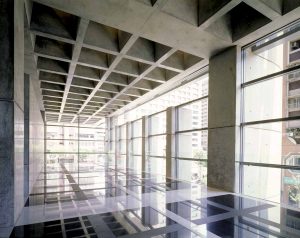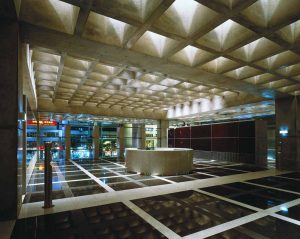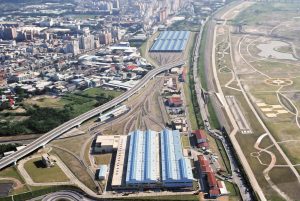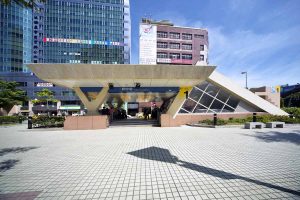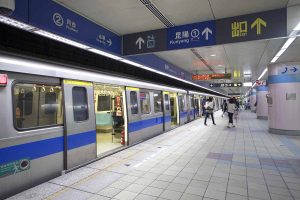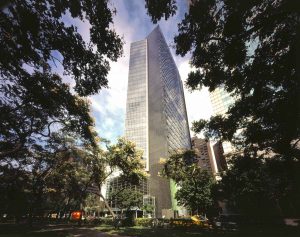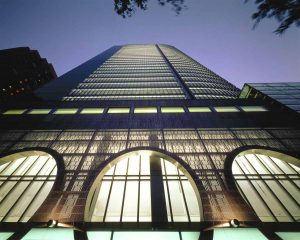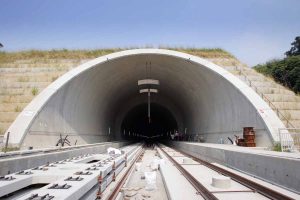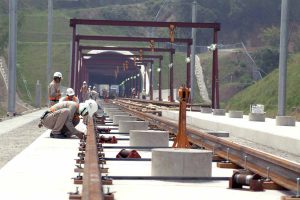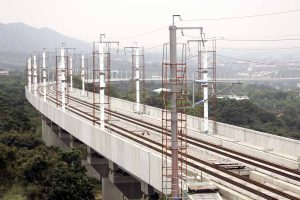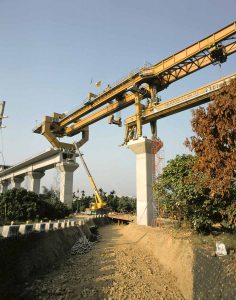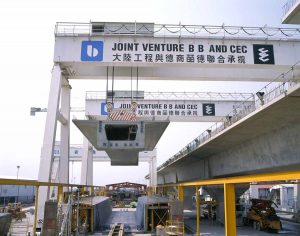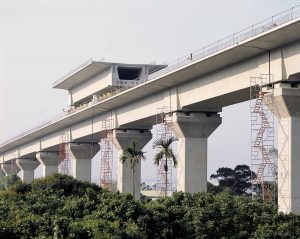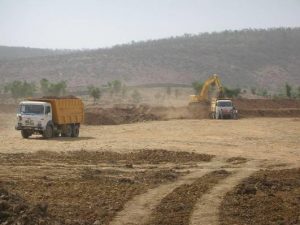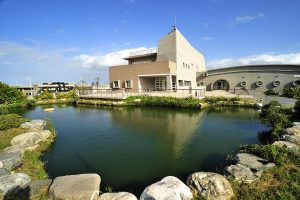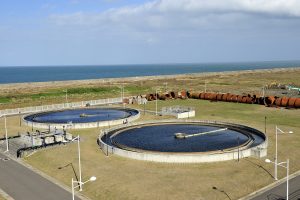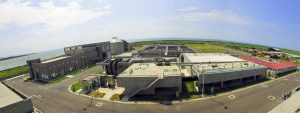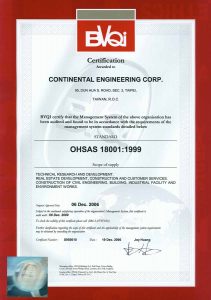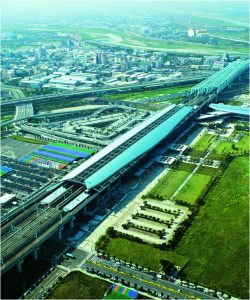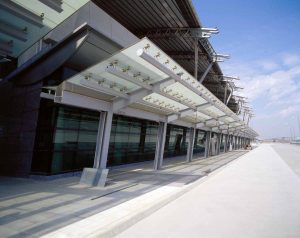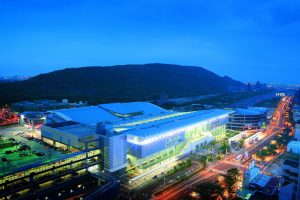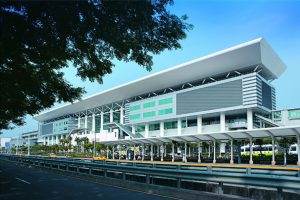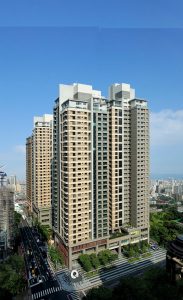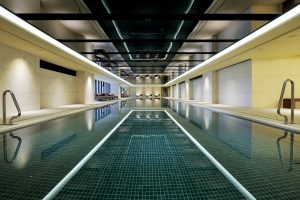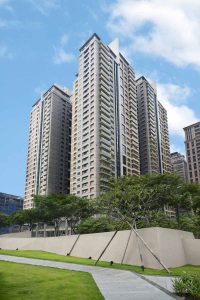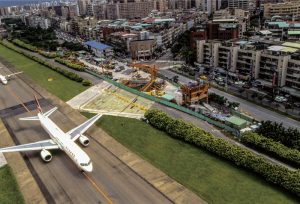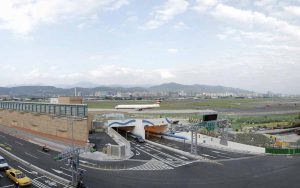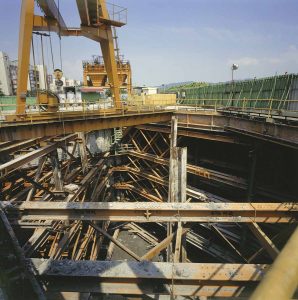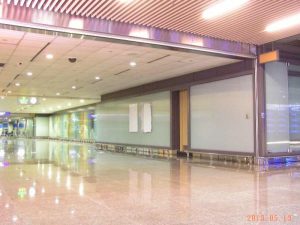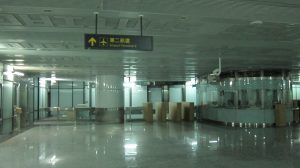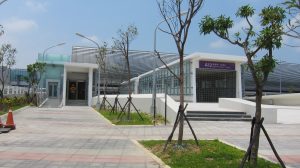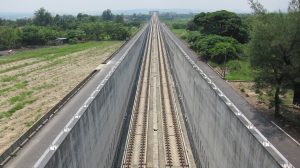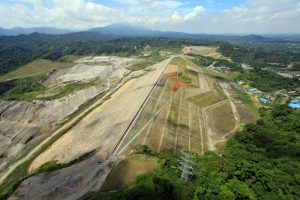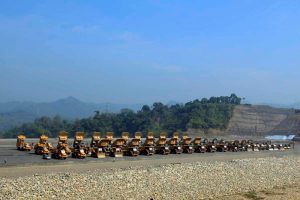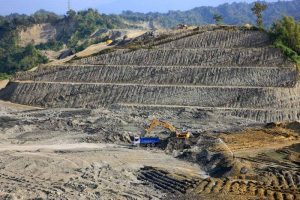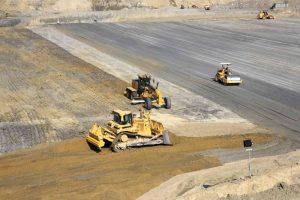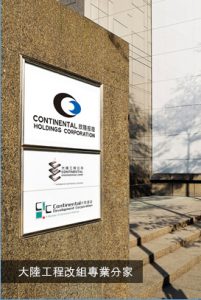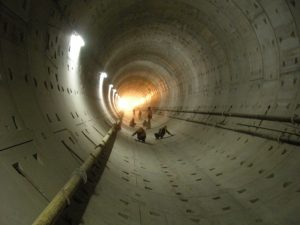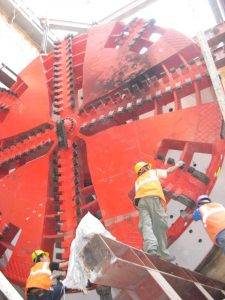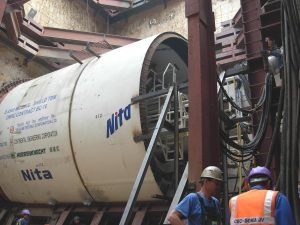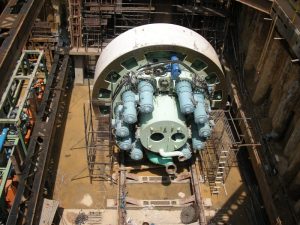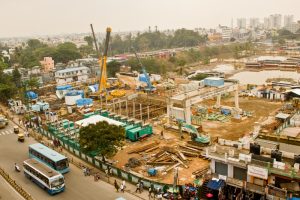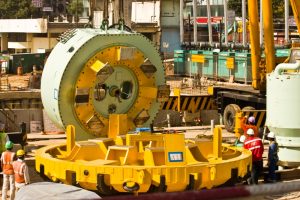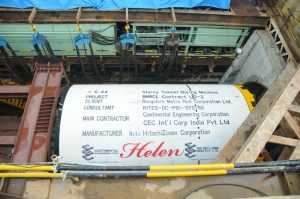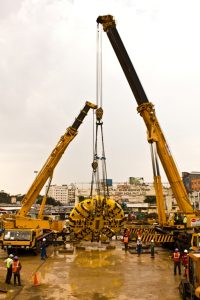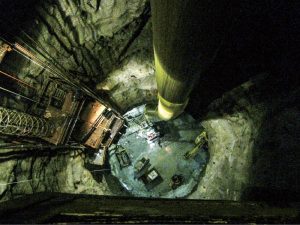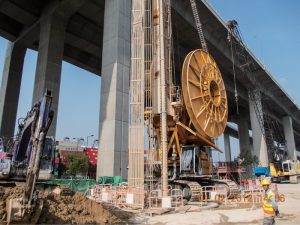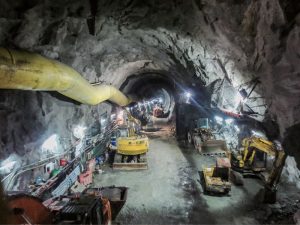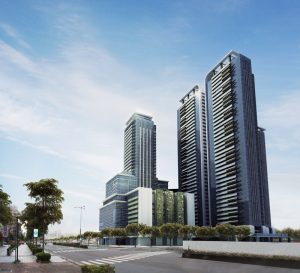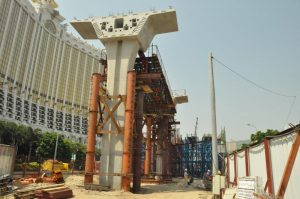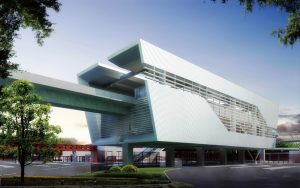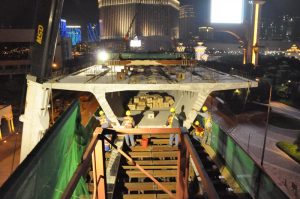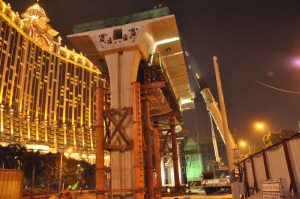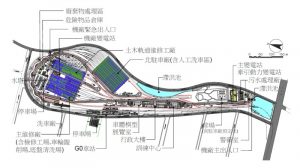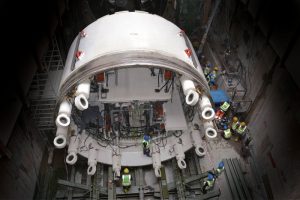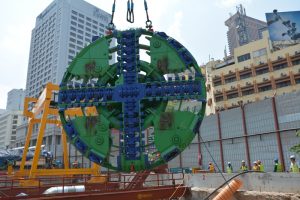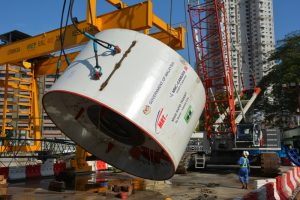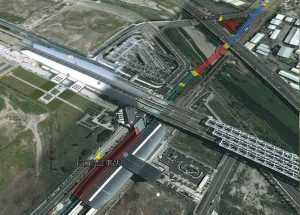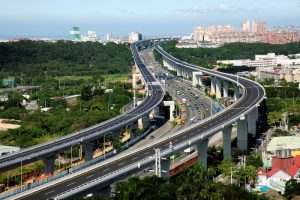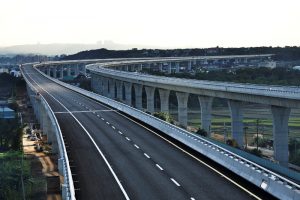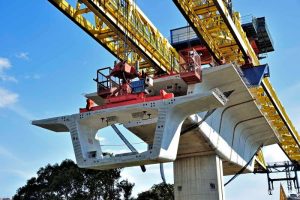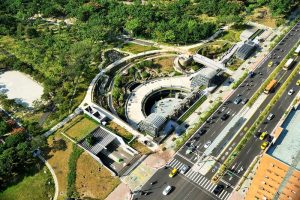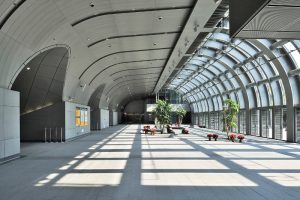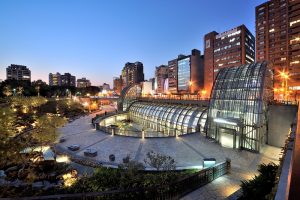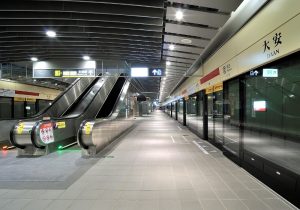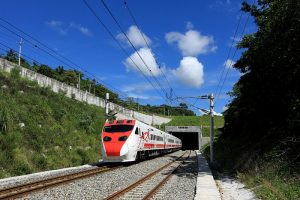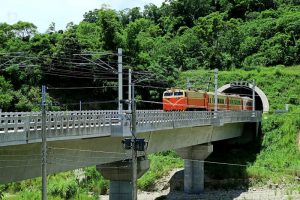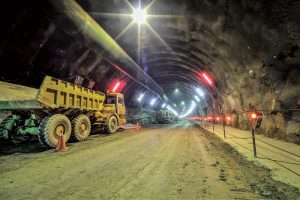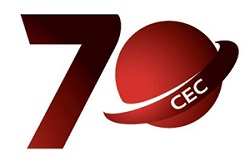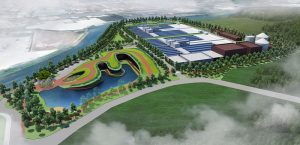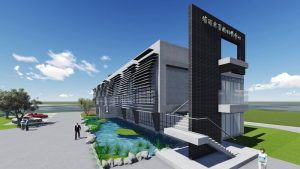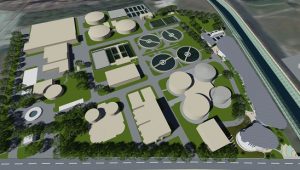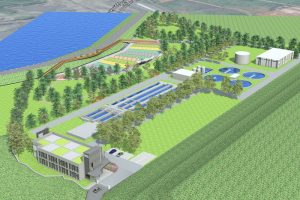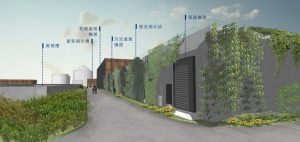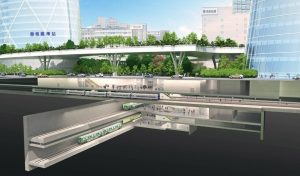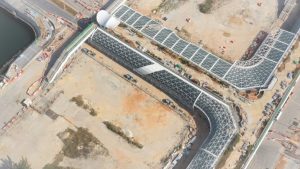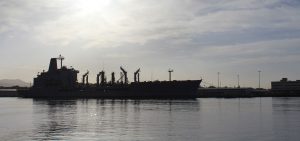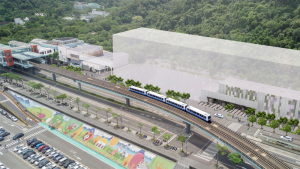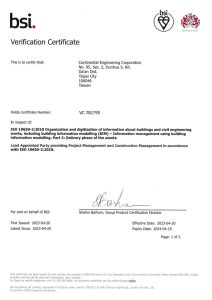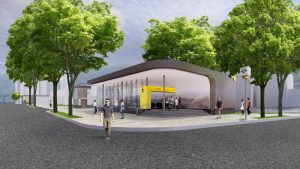
Timeline
1914
Birth of our founder
Glyn T. H. Ing, founder of Continental Engineering Corporation (CEC), was born in the coastal province of Zhejiang, in eastern China.
1936
Glyn T. H. Ing began his career
After graduating from Shanghai Jiao Tong University with a degree in civil engineering, Ing worked on major transportation infrastructure projects in northwest and southeast China for the state-run Lung-Hai Railway (now known as Longhai Railway) Management Bureau and the Chuan-Kang Transportation Bureau. The anti-Japanese resistance campaign was at its height.
1939
World War II erupted
1941
Pearl Harbor attacked during World War II
Wei Dah Corporation was established
Ing established his first company, Wei Dah Corporation, the precursor of CEC. Based in Chungking, (also known as Chongqing) its main business was the construction of national defense infrastructure including the Sichuan airport taxiways and military barracks.
1945
World War II ended
Wei Dah became CEC
Wei Dah Corporation was renamed and restructured as Continental Engineering Corporation, symbolizing Ing’s sweeping ambition to rebuild the nation. After the war, CEC moved its headquarters from Chungking (also known as Chongqing) to Shanghai to take on the massive task of postwar reconstruction.
1946
Civil war broke out between KMT Government and the Communist Party in China
1947
India and Pakistan became independent
Nanjing and Taipei offices established
CEC focused on postwar reconstruction from its headquarters in Shanghai and two new branch offices in Nanjing and Taipei. Its main businesses in Nanjing were construction of the airport and post offices.
1948
Branch offices were restructured in the move to Taiwan
CEC’s new headquarters were located on Chongqing South Road in Taipei. During this period, CEC’s business was primarily military contracts – the Hsinchu Airport runway and apron; warehouses, dormitories and mess halls for the Air Force; the Armed Forces Supply Center; US military warehouses; engineering and maintenance facilities; living quarters for the US military; and US military compounds in Taipei, Taichung, Chiayi, and Kaohsiung.
CEC obtained the rights to represent French Freyssinet prestressed concrete technology in Taiwan
1949
R.O.C. government relocated to Taiwan
1950
Korean War began
1953
The Korean Armistice Agreement ended Korean War
1954
Taiwan and the US signed the “Sino-American Mutual Defense Treaty”
1955
Nita Ing was born
Nita Ing was the youngest of Ing’s three children – a boy and two girls. She later became chairman of the board of CEC.
1957
USSR successfully launched the first satellite
1958
CEC was first in Taiwan to use prepakt concrete
CEC formed a joint venture, Prepakt China Company Ltd., with Intrusion Prepakt of Cleveland, Ohio. CEC became the first in Taiwan to introduce prepakt grouting and foundation piling technology. Prepakt concrete piling technology was used in construction of the nuclear reactor at Tsing Hua University. CEC also became the first to use precast concrete columns for excavation support in tunnel construction for the Nanhu coal mine.
Completed Taiwan’s largest hospital
CEC built the 1,000-bed Taipei Veterans General Hospital.
1959
Tunghai University campus complex designed by I. M. Pei
CEC worked with the world-renowned architect, I. M. Pei, on construction of dormitories, a chapel, and sports center at Tunghai University.
Built Taipei Mosque, the first Muslim place of worship in Taiwan
This government contract was partially funded by Saudi Arabia, and has become a landmark for visitors from the Middle East as well as the primary place of worship for Taipei’s Muslim community.
1960
OPEC was established
CEC built the Yuanshan Tunnel
1964
Taiwan Legislature approved Veterans Assistance Act, giving preferential treatment to state-run contractors on government projects.
Pioneered in international markets
CEC was the first among its Taiwanese peers to explore business opportunities outside of Taiwan, after the government passed the Veterans Assistance Act, legislation that gave preferential treatment to state-run contractors on government projects. Among CEC’s first international projects were military compounds for the US government in Okinawa and Guam.
1965
Kuang Wu Villa, first multi-story residential complex
Kuang Wu Villa, on Taipei’s Zhongxiao East Road, was a new concept of urban living in Taiwan and paved the way for developments in the Xinyi, Nankang, and Neihu districts of Taipei, turning what was formerly an urban periphery into the Taipei East District, a bustling residential, commercial, and business center.
US ambassador to Taiwan announced end of USAID
1969
The first humans landed on the moon
Glyn T. H. Ing was elected chairman of the Housing and Real Estate Association of Taipei
CEC built Fu Jen Catholic University Gymnasium
SVD Architects of Rome, Italy, designed the gymnasium, which used a precast dome structure with no internal beams or columns, establishing a first for Taiwan.
1971
Taiwan withdrew from the United Nations
1972
Chiang Ching-Kuo appointed premier, launched “Ten Major Construction Projects” in Taiwan
“Ten Major Construction Projects”
CEC a major player in the government’s “Ten Major Construction Projects” initiative
Of the ten national projects, CEC built the Yuanshan Bridge section of the First Freeway and the structural foundations for the Chiang Kai-Shek Airport Terminal. During this period, Glyn T. H. Ing helped form the Real Estate Association of ROC, and served as its Chairman for the next 21 years.
1973
Middle East Oil Crisis Began
Completed Continental Building
CEC completed the Continental Building, the first office building located in the East District of Taipei, which was also the first large building in Taiwan without interior columns.
Completed Grand Hotel
CEC’s construction of one of Taipei’s landmarks, the Grand Hotel, in the style of traditional Chinese palace architecture, led to technical innovations including a new underpinning technique to protect adjacent buildings, as well as a ground covering method for slope protection during excavation. The steep slope of the palace-style tiled roof made it necessary to develop new installation techniques. The use of reinforced concrete technology to create a building in the traditional style was widely admired by industry experts.
1974
Bridge building technology from Japan
CEC became the first construction company in Taiwan to use the Freyssinet prestressing method in the construction of the Yuanshan Bridge section of the First Freeway, after sending a team of engineers to Japan to study the technology. The late President Chiang Ching-Kuo visited the site during its construction.
1975
Taiwan President Chiang Kai-Shek passed away
1977
Yuanshan Bridge
CEC completed the Yuanshan bridge. At 1,452 meters total length, it had the longest span and the largest deck area of any balanced cantilever prestressed concrete bridge in the world at the time. The high quality and timely completion of the bridge brought CEC to the forefront in bridge construction.
Scissor-shaped stairs for public spaces
CEC introduced and designed an innovative stair shaft for the Ching An Mansion, achieving both cost and space savings. The scissor-shaped design was widely admired.
1978
US ended official diplomatic relations with Taiwan
Hao Ran Foundation
Glyn T. H. Ing founded the charitable Hao Ran Foundation, named for the house in Tokyo where his father sought refuge as a young revolutionary against the Ching dynasty. The foundation continues to work on issues including education, human rights, environmental protection, and other global concerns.
https://www.hao-ran.org/en/
First projects in the Middle East
CEC was awarded contracts for the Industrial Power Building, Riyadh Postal Center, and REDEC Office Building projects in Saudi Arabia, which required the use of clear face concrete and system formwork, and had to meet international standards for quality and project management. The experience provided a vital introduction to the international construction market for CEC as it learned how to compete with the world’s leading contractors.
Precast building construction
CEC sent engineers to Japan to study the precast building construction method, used in industrial factories, shopping malls, and external walls of buildings.
1979
Glyn T. H. Ing was elected president of the Asia Pacific Real Estate Federation (APREF)
As president, Ing promoted Taiwan as a venue for the 1986 annual meeting of the International Real Estate Federation.
1981
IBM introduced its first personal computer
Steel molds for precast concrete panels
CEC developed steel molds for precast concrete panels for use in building Saudi Arabia’s Riyadh Postal Center.
1982
Pre-assembled module formwork systems
CEC developed pre-assembled module formwork systems, which eliminated traditional on-site assembly and improved efficiency. The new system was used in the construction of the Hsing An Public Housing Complex in downtown Taipei, and helped improve quality, shorten completion time, and reduce costs.
1984
Chiang Ching-Kuo and Lee Teng-Hui elected as the 7th President and Vice President of Taiwan
1986
Glyn T. H. Ing was elected president of IFAWPCA
Ing was elected President of the International Federation of Asia and Western Pacific Contractors’ Associations (IFAWPCA), an important platform for Taiwan in overseas construction markets. Since 1956, IFAWPCA has grown from 8 to 15 members, including Tokyo, Seoul, Canberra, Wellington, New Delhi, and Colombo. Taiwan was a founding member.
Nita Ing became president of CEC
As CEC President, Nita Ing recruited professional managers and streamlined the corporate structure with the aim of making CEC a global leader in civil engineering and construction.
1987
Taiwan repealed martial law
Fair and transparent public construction
Glyn T. H. Ing helped establish the Construction Industry Foundation for Research and Development in order to promote fair and transparent public construction procurement policies as well as enhance standards in organizational and management structure of contractors.
1988
President Chiang Ching-Kuo passed away. Lee Teng-Hui became president of Taiwan.
Glyn T. H. Ing was the first Asian to serve as global president of FIABCI
During Ing’s term as global president of the International Real Estate Federation (FIABCI), he donated his own funds to invite experts from the United Nations to conduct several important studies, including global surveys of low-income housing, housing for the elderly, and the inter-relationship between environmental protection and property development.
1989
APEC was founded
The Village
This combined residential and commercial development, located in a hilly area, became Taiwan’s first example of a large-scale residential project that used integrated planning to protect the environmental assets of its woodland site. After the land was acquired, CEC took 15 years to master the technological and design requirements for a project of this quality, at an additional cost of hundreds of millions of New Taiwan dollars. In 2006, The Village was awarded the FIABCI-Taiwan Real Estate Excellence Award – Special Award in the construction quality category. It continues to be regarded as the most forward-looking community development of its type in Taiwan.
American Bridge Company
Glyn T. H. Ing invested the 100-year-old American Bridge Company (ABC), builder of such legendary projects as the San Francisco-Oakland Bay Bridge, Woodrow Wilson Bridge, and Mackinac Bridge. ABC specializes in the construction of complex steel structures, repair and maintenance of bridges, construction of large-scale bridges, military marine bases, structural works and buildings. (Note: CEC divested the business in 2020)
1990
The Berlin Wall fell
1991
Taiwan joined APEC
Glyn T. H. Ing served as president of CICA
As president of the Confederation of International Construction Associations (CICA), Ing was a powerful voice representing Taiwan internationally, and was focused on aiding housing and construction in the developing world.
The first MRT tunnel project
CEC was awarded the first MRT tunnel project, the Blue Line CN256, which helped to establish CEC as a leader in MRT tunneling technology, and led to new tunneling projects in India and Southeast Asia. CEC obtained the technology for this project from the cooperative Japanese company, TEKKEN Corp.
1992
Bitan Bridge
CEC built Taiwan’s first prestressed arch bridge, the 800-meter Bitan Bridge of the Second Freeway (Freeway No. 3), which included the Xindian No. 5 tunnel from the north, the Xindian river crossing, and an off ramp connecting to the Ankeng Interchange. CEC was awarded the Construction Technology Automation Award for the steel caissons it developed for deep foundation excavation in the Xindian river. Bitan Bridge became a landmark and a symbol of technological excellence for Taiwan’s infrastructure construction industry.
New construction technologies
As a key contractor for the nation’s most significant infrastructure projects, CEC was a pioneer in employing new construction methods, such as the Tunnel Boring Machines, New Austrian Tunneling Method (NATM), and non-explosive tunnel excavation methods, bringing Taiwan’s construction industry to new heights.
1993
EU was established
Glyn T. H. Ing was elected honorary Lifetime President of FIABCI Taiwan
After helping to establish The Real Estate Association of R. O. C. in 1972, the organization was officially recognized by the international Real Estate Federation (FIABCI) in 1974. In recognition of his many contributions, members of FIABCI Taiwan honored him with the title of Lifetime President.
CEC licensed the CONEX Tunnel Segment System from Austria
CEC introduced the CONEX Tunnel Segment System from Austria – another breakthrough for Taiwan’s engineering and construction industry.
1994
End of an era
On April 27, at the age of 80, our founder Glyn T. H. Ing passed away
Taiwan Top Quality Contractor Award
CEC received Taiwan’s Top Quality Contractor Award for the innovative alternative construction methods used in the National Highway No. 3 (also known as Southern Taiwan Second Freeway) Kaohsiung Beltway C393Z project, including precast bridge segments and a balanced cantilever construction method. The client adopted this design, recognizing that it was an improvement over the original.
Public listing of CEC
CEC was publicly listed and traded on Taiwan Stock Exchange on August 4, 1994. This marked the transformation of CEC from a family-run company to a modern, efficient, professionally managed corporation.
1995
WTO was established
Taiwan joined GATT
1996
ISO9001 certification
CEC became the first construction company in Taiwan to receive ISO9001 certification, the standard used by more than 100 countries. The ISO certification standard reflects the company’s ability to manage operations aligned with the latest management standards, and is a testament to the company’s quality control system and management’s commitment to continuous improvement.
1997
Asian financial crisis broke out
Hong Kong reverted to China
Cable-stay bridge method for the Hsin Tong Bridge
CEC introduced cable-stay bridge construction technology in the Hsin Tong bridge, which connects Miaoli city and Kungkuan township. Cable-stay bridges require fewer piers, and have longer spans than conventional pier-supported bridges, reducing the risk of damage during storm surges.
1998
Taiwan High Speed Rail
CEC built a significant portion of the then world’s largest transportation Build-Operate-Transfer (BOT) project at the time, the Taiwan High Speed Rail Project from Taipei to Kaohsiung. CEC was responsible for viaducts and tunnels in the Changhua, Yunlin, and Chiayi sections, as well as the two technically challenging stations of Taichung Wuri and Kaohsiung Zuoying. CEC worked with its technical partner, Bilfinger Berger AG (now known as Bilfinger SE), to become more competitive in international project bidding and construction.
1999
Macau returned to China
Min Sheng East Road Office Tower
CEC moved its headquarters to the newly completed Min Sheng East Road Office Tower, which used clear face concrete and exposed structural steel. The tower received an award for Excellence in Structural Engineering from the Structural Engineers Association of Southern California (SEAOSC) in 2000, and remained CEC’s headquarters until 2004.
The first M&E and civil engineering turnkey project
CEC won its first turnkey project for Taipei Metro Tucheng Line Extension contract CD550. The contract covered train depots, civil works, track works, rolling stock, power supply, signaling, communication, systems integration, commissioning, and testing. The civil works of the contract included two underground stations, a maintenance depot, and tunnels using both tunnel boring machines and the cut and cover method.
2000
Taiwan experienced first change in governing party. The ruling party changed from KMT to DPP.
2001
Terrorists attacked the US on 9/11.
2002
Taiwan joined WTO
2003
SARS broke out
2004
CEC headquarters moved to Dun Hua South Road Office Tower
CEC completed the Dun Hua South Road Office Tower in 2003. Designed by the US architectural firm, Kohn Pederson Fox Associates, the structural steel office building has 31 floors and 6 underground levels, and was named one of Taipei’s top ten office buildings in 2005 and 2013 by CB Richard Ellis, the world largest real estate investment group. The office building has been CEC’s headquarters since 2004.
Most admired company
Commonwealth Magazine, Taiwan’s leading financial and management magazine named CEC Taiwan’s “Most Admired Company” in the construction industry category for the fifth time.
Record speed in tunnel excavation
CEC won the contract for the C260 section of the Taiwan High Speed Rail Project, which passes through Paghuashan Mountains. The scope of work included 7 tunnels, 13 bridges and extensive civil works. The most difficult stretch was the 7.4 km Paghuashan Tunnel. The tunnel was broken through in 22 months, two months ahead of schedule. It set a new time record for tunnel construction. In addition to the time record, the tunnel was a successful example of minimizing environmental damage from construction.
British industry award for C260/C270 projects
CEC was awarded the contract for the C270 section of the Taiwan High Speed Rail Project, which included 43 km of double track viaduct, four river crossings, and the Yunlin Station area. In building continuous viaducts for both the C260 and C270 projects, CEC was the first to use the 30-meter and 35-meter full-span precast launching method, winning recognition from the industry for its ingenuity, quality, and speed. The C260/270 project received the British Construction Industry International Award in 2005.
2005
India market entry and founding of CICI subsidiary
CEC was awarded the India National Highway Contract RJ-7. It established an Indian subsidiary, CEC International Corporation India Pvt. Ltd. (CICI) to carry out the work. After this initial milestone, CICI went on to win further contracts in India.
Environmental engineering market entry and founding of HDEC Corporation in the next year.
CEC built Taiwan’s first BOT wastewater treatment project in the New Taipei Tamsui area. This key environmental project helps to provide an updated model of wastewater treatment in the Tamsui area and is recognized as the most aesthetically pleasing wastewater treatment plant in Taiwan. The success of this project led to the establishment of a subsidiary in 2006, HDEC Corporation, to explore opportunities in the environmental market.
2006
OHSA S18001 certification
CEC became the first in Taiwan’s construction industry to receive OHSAS18001 certification, reflecting the company’s high standards in occupational health and safety.
Wuri Station, Taichung
CEC completed the technically challenging High Speed Rail Wuri Station, the largest steel-reinforced concrete structure in the Taiwan High Speed Rail Project. In order to reach the required strength level, one of the steel columns in the Wuri Station was made of 8 steel H-beams welded together, in contrast to conventional steel columns which use one steel H-beam. A major design challenge was to integrate the station and track supporting structures, making Wuri Station unique among the stations in the Taiwan High Speed Rail Project.
Zuoying Station, Kaohsiung
CEC completed the Taiwan High Speed Rail Station at Zuoying, the only station at grade. Zuoying Station has multiple tracks with a concourse level at the second floor and platforms at ground level. Zuoying is the only station in southern Taiwan where the Taiwan High Speed Rail, conventional railways, and the MRT converge. This represents the emergence of a new business, commercial, and residential center in Kaohsiung.
2007
Taiwan High Speed Rail (THSR) commenced operation.
Nita Ing became chairman of the board
Excellence award for the Bridge up to Zenith
FIABCI Taiwan awarded CEC’s Bridge up to Zenith the 2007 FIABCI-Taiwan Real Estate Excellence Award in planning & design. The Bridge up to Zenith is a complex of four large-scale, steel-reinforced concrete, earthquake-proof residential buildings in the Banqiao Special Zone.
Endless self-advancing method from Japan
CEC adopted the proprietary Endless Self-Advancing (ESA) Method from Japan’s Uemura Corp. in constructing the tunnel underpass beneath the Songshan Airport. The project received the Taiwan Public Construction Golden Quality Award.
Taiwan Taoyuan International Airport MRT System
CEC won the CU02 contract for the Taiwan Taoyuan International Airport Access mass rapid transit (MRT), to improve airport connections with the Taipei Railway Station, High Speed Rail Taoyuan Station, and Taipei MRT.
Hushan Reservoir project
CEC’s award-winning Hushan Reservoir project used soil and rocks excavated on-site to minimize damages to the environment and maximize efficiency. The foundation of the dam, which was built to withstand earthquakes, included an underground plastic concrete wall to seal the dam from ground water, improving safety and water quality. CEC received both the Public Construction Superior Quality Award and 2012 Public Construction Quality Excellence Award from the Economic Ministry for its earthquake-proof, environmentally-friendly Hushan Reservoir project.
2008
Financial crisis enveloped the world
2009
Hong Kong branch office
CEC established a branch in Hong Kong to explore the Hong Kong and Asian markets.
2010
Taiwan and China signed ECFA
CEC restructuring
CEC spun off its property development business as Continental Development Company (CDC) and established Continental Holdings Corporation (CHC) as a holding company for both CDC and CEC. The restructuring allowed CEC and CDC to focus on their core businesses by aligning resources and management systems, with CHC responsible for strategic business guidelines for both.
Metro tunneling works in India
CEC completed Contract BC-16 in New Delhi, a model project for the New Delhi Metro. CEC’s team set a new record by boring 202 meters (168 rings) in one week, establishing CEC’s competitive credentials in India’s metro market.
First slurry tunnel boring machine for India
CEC imported India’s first slurry tunnel boring machine for the Bangalore Metro UG-2 project, which included construction of four underground stations and two 5.8-meter diameter tunnels. Although the technology is higher cost and more complex to operate than conventional tunnel boring machines, the unique Bangalore terrain, with its mixture of very hard rock and mud, demanded a unique solution. Use of slurry tunnel TBMs allowed tunnel boring to be conducted safely and efficiently underneath the highly congested downtown Bangalore traffic.
2011
Stonecutters Island HATS 2A
CEC HK branch was awarded contracts for constructing two 90-meter deep shafts and an 880-meter long, 8.5-meter diameter expulsion tunnel for Hong Kong’s HATS 2A Waste Water Treatment Improvement Works. This is the world’s largest wastewater treatment plant, with a capacity of 1.7 million cubic meters intake of first level waste water for 3.5 million people.
Macau branch office
CEC established a Macau office to pursue projects in the Macau Special Administrative Region.
Taipei Yihwa International Hotel
CEC broke ground for the Yihwa International Hotel (The Marriot Taipei) , an integral part of Taipei‘s urban renewal project and the largest international conference and tourist hotel in Taiwan. The scope of the project included an international tourist hotel, multi-function international conference center, two luxury high-rise residential buildings, totaling 25,240 m² with an investment of over US$ 170 million.
2012
European debt crisis emerged
Macau C360 Light Rail
CEC’s Macau branch won its first project, the Macau C360 Light Rail, which serves the cultural and entertainment business district in Macau as well as residents in the Nova Zona Urbana areas and sporting events in the Macau Sports Area.
First Taichung MRT civil work
CEC won the CJ910 Contract for the Taichung MRT project, including three subcontracts, CJ910A for the civil works for Peyton Depot and G0 Station; CJ914A for environmental control facilities for the G0 station utilities and depot; and CJ901 for track works for the Wuri to Wenxin line. These were its first contracts awarded in the Taichung area.
Metro Project in Kuala Lumpur
CEC won its first Malaysian project, the 2.6 km Kuala Lumpur Metro underground tunnel from Pudu to Pasar Seni Station, and Merdeka Station. After completion of the metro line in 2016, it will take just 40 minutes to travel from Pasar Seni to the Kuala Lumpur city center.
Malaysian subsidiary
CEC established a subsidiary, CEC International Malaysia SDN. BHD (CIMY) to take advantage of the opportunities in Malaysia’s growing infrastructure sector.
2013
Human rights leader Nelson Mandela passed away
Taichung Metro projects
CEC won its third major project in the Taichung area with CJ930 Contract, the most critical section of the Taichung Green Line Metro, which significantly reduces travel time between the Wuri High Speed Rail Station and Taichung City. Similar to CJ910, the CJ930 Contract included elevated viaducts for stations G10-G17, elevators, and escalators for all the stations of the green line.
Taiwan National Freeway No.1 (C910)
CEC completed the US$2.95 billion, C910 Contract for widening of the 40 km Wugu-Yangmei section of National Freeway No. 1, relieving traffic congestion for the Taoyuan Section of Freeway No. 1.
2014
Hong Kong protested Chinese influence with “Occupy Central” movement.
The Daan Forest Park Station for Taipei MRT
With the completion of the CR580A Contract, a tunnel boring project for the Taipei MRT’s Xinyi Line, CEC’s first tunnel boring project in which it did not work with international technical partners, CEC established itself as Taiwan’s leading tunnel boring machine construction contractor. The project included Daan Station, Daan Forest Park underground station, the stabling track area, and 4.14 km of tunnel boring to connect four stations. It won the Excellence Award in Construction Methods from the Taipei Municipal Government. Daan Forest Park has become a landmark on the Taipei MRT, for the way the station design blends with the natural beauty of its surroundings.
Shan-Li tunnel for Hualien-Taitung railway electrification
CEC completed this project ahead of schedule in March 2012, allowing the electrification of the train in August of 2013. The most technically challenging of four tunnel contracts for electrification of the Hualien-Taitung Railway, the CL314 Shan-Li Railway Tunnel Project was in the southernmost stretch of the project with a total length of 8,210 meters. The scope of work included a 5,300-meter double track tunnel, situated in a difficult to access mountain area, making geological surveys and materials transport difficult. The project encountered heavy storms that destroyed roads and supply lines to the construction site, resulting in additional time and cost to resume work. With the completion of the tunnel and railway project, the total travel time from Taipei to Taitung was reduced from 5 hours to 3.5 hours.
Record work-on-hand
With the booming property market and the reputation for quality that CEC has established over the years, it saw a significant increase in building construction work, leading to a record high US$2.13 billion in work-on-hand as of July 2014.
2015
70th Anniversary
CEC celebrated 70 years in business, it has defined itself as a company that accepts change and is committed to innovation. This important milestone is also a new beginning, and it looks ahead to another 70 years of path-breaking leadership in the global civil engineering and construction industry.
ISIS coordinated a series of terrorist attacks in Paris
2016
CEC’s subsidiary – HDEC Corporation awarded three projects
With solid expertise in wastewater treatment engineering, CEC’s subsidiary, HDEC Corporation, was awarded three projects – Fengshan River wastewater reclamation and reuse BTO project, Chungli area sewerage system BOT project, and Puding sewerage system BOT project. Among these projects, Fengshan River BTO project is the first case of wastewater reclamation and reuse in Taiwan. It is able to provide 45,000 tons of recycled water per day for the Kaohsiung area.
United Kingdom decided to leave the EU after the referendum.
2017
North Korea’s successive missile tests triggered crisis on the Korean peninsula.
Taiwan Taoyuan International Airport MRT began operation
CEC was awarded C211 and C214 contracts associated with the Tainan Railway Underground Project in Taiwan.
CEC divested HDEC Corp.
In order to achieve better efficiency and focus in specialty fields, CEC, via divestiture, transferred ownership of HDEC Corporation, its wholly-owned subsidiary, to its mother company, CHC.
CEC was awarded the design and build Contract E in the Guanci Po-Ai Park Public Housing Development Project in Taiwan.
2018
CEC Taiwan Office awarded GC01 contract of Taoyuan MRT Green Line
North and South Korean leaders signed joint peace agreement
2019
Mr. Simon Buttery appointed CEO of CEC
Hong Kong protests
CEC Taiwan Office awarded the Taipei Nangang Depot Public Housing Design and Build Project.
CEC Hong Kong Office awarded contract G506 – Construction of Station Square at Kai Tak (Phase 1)
2020
The UK no longer a member of the European Union
Global Covid-19 outbreak
2021
The major rollout of mRNA COVID-19 vaccines continued.
2022
CHC became CEC’s sole corporate director
CEC’s parent company, Continental Holdings Corporation (CHC) was elected the sole corporate director of CEC. Through this change CHC aims to centralize its managerial power over its subsidiaries, which will hence no longer have their respective boards of directors and each will be governed by a sole corporate director and a sole corporate supervisor. Nita Ing remains the Chairman of CHC and continue guiding CEC and other subsidiaries.
